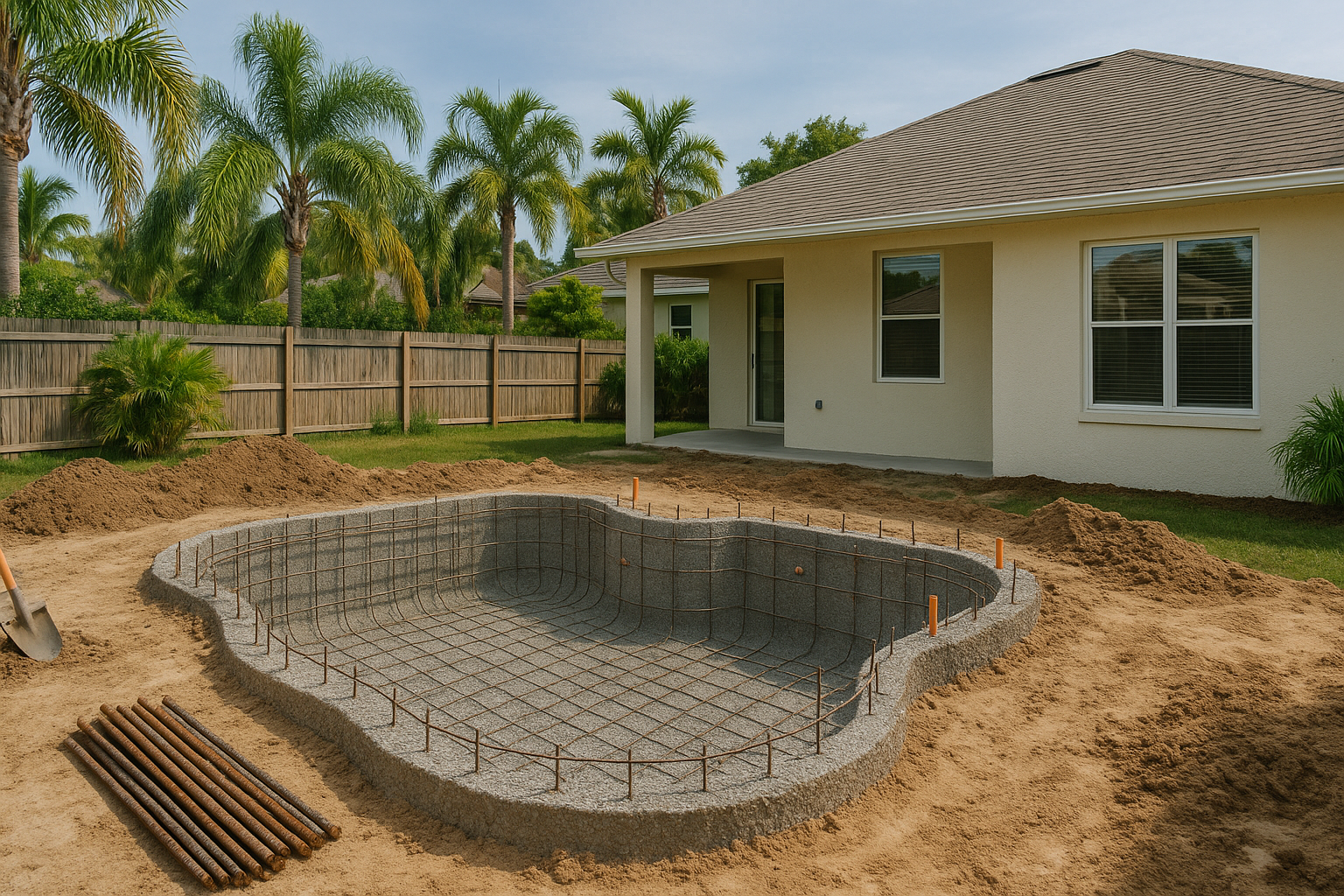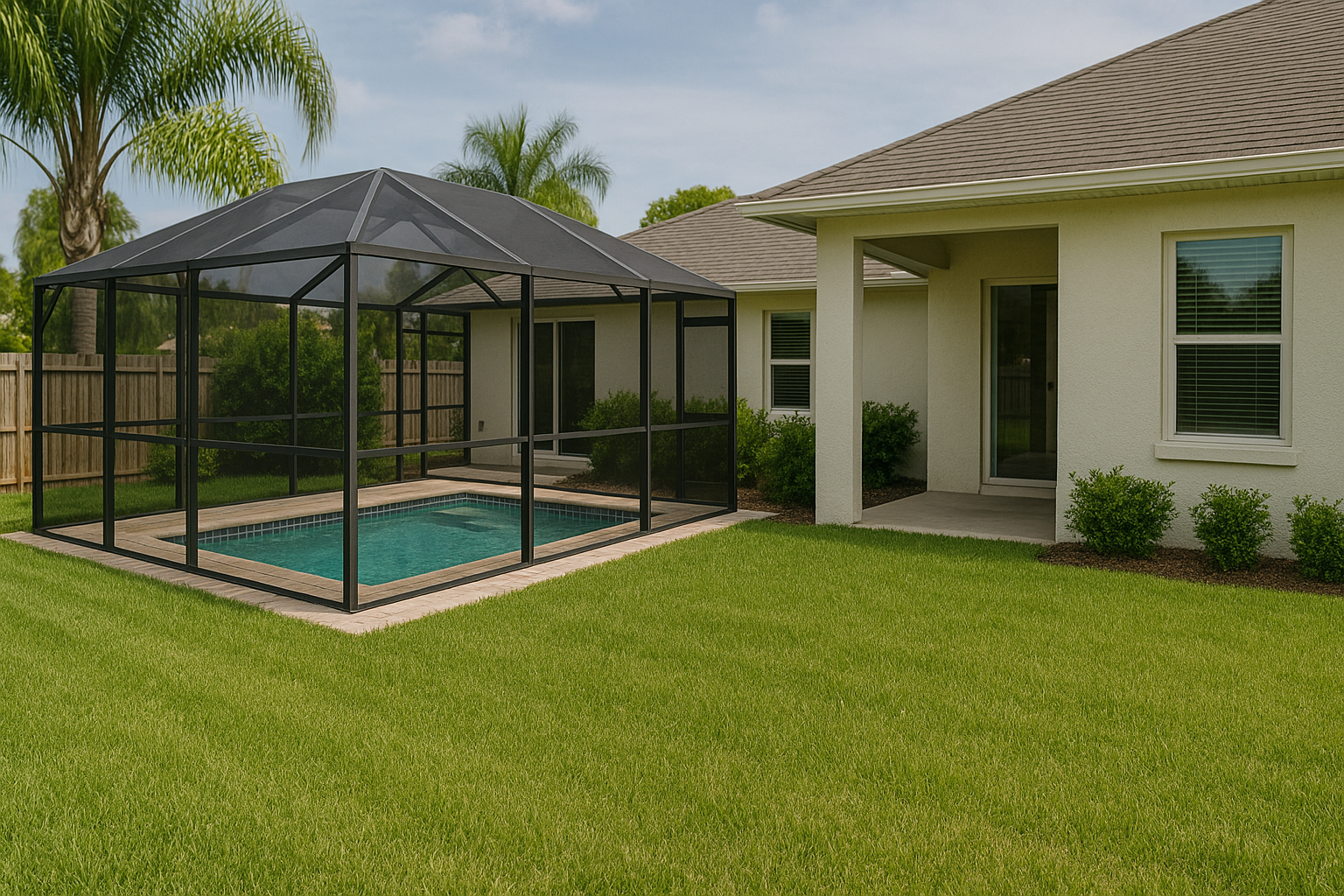Signs It's Time to Resurface Your Cape Coral Pool
Understanding Pool Resurfacing
Pool resurfacing is the process of restoring a swimming pool’s interior by applying a new layer of durable material over the existing surface. This typically involves removing old, damaged finishes and applying fresh plaster, quartz, pebble, or tile. The goal is to create a smooth, watertight, and visually appealing surface that enhances both functionality and aesthetics. In Cape Coral, where pools are used year-round due to the warm climate, resurfacing becomes even more critical. The constant exposure to sunlight, heat, and chemicals can accelerate wear and tear, making regular upkeep essential for maintaining your pool's integrity.
Because Cape Coral residents rely heavily on their pools for recreation and relaxation, any issues with the surface can disrupt this enjoyment. A well-maintained pool not only looks better but also ensures safety and comfort for swimmers. Neglecting resurfacing can lead to bigger problems down the line, which is why understanding the signs of deterioration is crucial. By addressing these signs early, you can extend the life of your pool and avoid costly repairs.
The Importance of Timely Pool Resurfacing
Timely pool resurfacing is vital for preserving both the appearance and structural integrity of your pool. Over time, the surface can degrade due to factors like chemical imbalances, weather conditions, and general wear-and-tear. If left unchecked, minor issues can escalate into major problems that require extensive—and expensive—repairs. For example, small cracks can widen, leading to leaks or even structural failure if ignored for too long.
Beyond financial concerns, neglecting pool resurfacing can pose safety risks. Rough surfaces or sharp edges can cause injuries to swimmers, while leaks may create hazards around the pool area. Additionally, an outdated or deteriorated pool can diminish your property's curb appeal and value. By staying proactive about resurfacing, you ensure that your pool remains a safe, attractive, and functional part of your home for years to come.
Rough or Abrasive Pool Surfaces
If your pool's surface feels rough or sandpaper-like, it's a clear sign that the finish is deteriorating. This texture change often occurs as the original surface wears away due to age, improper chemical balance, or frequent use. In Cape Coral, where pools are exposed to harsh sunlight and high temperatures, these factors can accelerate surface breakdown. Rough surfaces aren’t just unpleasant—they can scratch skin, snag swimsuits, and make cleaning more difficult.
Beyond discomfort, abrasive surfaces can harbor algae and bacteria, creating unsanitary conditions. They also increase friction, which can damage pool equipment like vacuums and filters. Addressing this issue promptly through resurfacing will restore the smoothness of your pool and protect against further damage. Ignoring it could result in costly repairs or even health risks for swimmers.
Visible Cracks, Chips, and Flaking
Cracks, chips, and flaking (also known as spalling) are serious warning signs that your pool needs attention. These defects often appear as spiderweb-like fissures or chunks of material breaking off from the surface. In Florida's humid and variable climate, freeze-thaw cycles and shifting soil can exacerbate these problems, causing them to worsen over time. Even small cracks can allow water to seep into the underlying structure, potentially compromising its stability.
If left unaddressed, these issues can lead to larger structural problems, such as leaks or foundation damage. Not only does this compromise the safety of your pool, but it also increases repair costs significantly. Resurfacing helps seal these vulnerabilities, preventing further deterioration and ensuring your pool remains structurally sound. Early intervention is key to avoiding more extensive—and expensive—repairs later on.
Persistent Stains or Discoloration
Stains and discoloration are common issues in pools, often caused by algae growth, mineral deposits, or chemical imbalances. While some stains can be removed with thorough cleaning, others indicate deeper problems. For instance, persistent stains that resist treatment may signal that the surface itself is breaking down. This breakdown weakens the pool's ability to maintain water clarity and hygiene, impacting both aesthetics and functionality.
Ignoring stubborn stains isn’t just a cosmetic concern—it can affect the overall performance of your pool. A compromised surface makes it harder to keep the water clean and balanced, requiring more frequent maintenance and higher chemical usage. Resurfacing addresses these issues at their source, restoring the pool’s appearance and improving its efficiency. Don’t wait until the problem becomes unmanageable; take action when stains start to linger.
Frequent Leaks and Water Loss
Frequent leaks or unexplained drops in water level are red flags that your pool’s surface is failing. These symptoms suggest that water is escaping through cracks or porous areas in the surface, which can happen when older materials lose their integrity. In Cape Coral, where water conservation is increasingly important, consistent water loss not only wastes resources but also adds to utility bills. It’s crucial to identify and address the root cause before the problem worsens.
Leaks can also lead to other complications, such as erosion around the pool deck or damage to surrounding structures. Professional evaluation is often necessary to determine whether resurfacing is needed. By acting quickly, you can prevent further damage, conserve water, and save money in the long run. Remember, a leaking pool is more than an inconvenience—it’s a sign that immediate action is required.
Rising Maintenance and Repair Costs
If you find yourself spending more on pool maintenance, repairs, or chemicals, it might be a sign that your pool’s surface is deteriorating. As the surface breaks down, it becomes harder to maintain proper water balance, leading to increased chemical demands and frequent patchwork fixes. These mounting costs indicate that the pool is in ongoing decline and may need a complete overhaul rather than temporary solutions.
Outdated or Unsightly Appearance
An aging, faded, or outdated pool finish doesn’t just look bad—it detracts from your property’s overall appeal. If you’ve recently updated your backyard or pool area, an old-looking pool can clash with the new design. Resurfacing gives you the opportunity to refresh the pool’s look while addressing any underlying structural issues. A modernized finish can tie everything together, enhancing both aesthetics and functionality.
Benefits of Pool Resurfacing in Cape Coral
Resurfacing your pool offers numerous benefits, both short-term and long-term. In the short term, it improves the swimmer experience by providing a smoother, cleaner surface free of cracks and imperfections. This leads to better water clarity and hygiene, making your pool safer and more enjoyable. Additionally, a newly resurfaced pool creates a safer environment by eliminating rough spots and potential hazards.
In the long term, resurfacing protects your investment by extending the life of your pool and preventing costly repairs. It also boosts your property’s value, making it more attractive to potential buyers if you ever decide to sell. With Cape Coral’s competitive real estate market, having a pristine pool can set your home apart. Plus, a durable new surface shields against future issues, ensuring years of trouble-free enjoyment.
How Pool Resurfacing Works
The pool resurfacing process begins with thorough preparation, including draining the pool and cleaning the existing surface. Any damaged areas are repaired, and the surface is smoothed to create a solid foundation for the new finish. Once prepped, a new layer of material—such as plaster, quartz, or pebble—is applied evenly across the pool’s interior. This step requires precision to ensure a seamless, watertight result.
After application, the pool must cure for several days before it can be refilled and used again. Project timelines vary depending on the size of the pool and the chosen material, but most jobs are completed within one to two weeks. Understanding this process helps homeowners plan accordingly and set realistic expectations for downtime during the project.
Choosing the Right Resurfacing Material
When selecting a resurfacing material, consider options like plaster, quartz, pebble, or tile, each offering unique benefits. Plaster is budget-friendly but less durable, while quartz and pebble provide enhanced longevity and resistance to Florida’s climate challenges. Tile is highly customizable but tends to be pricier. Your choice should balance aesthetics, durability, and budget, keeping in mind regional factors like humidity and UV exposure.
When Should You Resurface Your Cape Coral Pool?
While most pools need resurfacing every 7-15 years, the exact timing depends on the material used and how frequently the pool is used. Visible signs like rough surfaces, cracks, or persistent stains should take precedence over strict schedules. Pay attention to these indicators and consult a professional if you notice any issues, as early intervention can prevent bigger problems.
FAQs: Signs It's Time to Resurface Your Cape Coral Pool
How often does a pool in Cape Coral typically need resurfacing?
Most pools in Cape Coral require resurfacing every 7-15 years, depending on the material and usage patterns. Factors like heavy chemical use, frequent swimming, and extreme weather conditions can shorten this timeframe. Regular inspections help identify when resurfacing is needed before major issues arise.
Are cracks in my pool always a sign I need resurfacing?
Not all cracks require immediate resurfacing. Small, superficial cracks can sometimes be repaired without replacing the entire surface. However, larger or spreading cracks indicate deeper structural issues that necessitate full resurfacing. Consulting a professional will help determine the best course of action.
Can I fix pool stains without resurfacing?
Some stains can be removed with specialized cleaning techniques or products, but persistent stains often point to surface degradation. If cleaning fails to resolve the issue, resurfacing is the most effective solution to restore the pool’s appearance and functionality.
What causes rapid wear and tear on pool surfaces in Cape Coral?
Cape Coral’s climate plays a significant role in accelerating pool surface deterioration. High temperatures, intense sunlight, heavy rainfall, and fluctuating humidity levels combine with chemical treatments and frequent use to wear down the surface faster than in milder climates.
What is the cost range for pool resurfacing in Cape Coral?
The cost of pool resurfacing varies based on factors like pool size, chosen material, and the extent of repairs needed. On average, homeowners can expect to pay between $3,000 and $10,000. Investing in quality materials and professional service ensures lasting results and minimizes future expenses.
Conclusion: Recognizing the Signs and Taking Action
Recognizing the signs that it’s time to resurface your Cape Coral pool is essential for maintaining its beauty, safety, and functionality. From rough surfaces and visible cracks to persistent stains and rising maintenance costs, these indicators shouldn’t be ignored. Addressing these issues promptly not only preserves your pool’s integrity but also enhances its aesthetic appeal and long-term value.
If you notice any of these symptoms, don’t delay scheduling a professional evaluation or consultation for pool resurfacing. Timely maintenance protects your investment and ensures years of enjoyment for you and your family. Take action today to safeguard your pool and keep it looking and performing its best.



